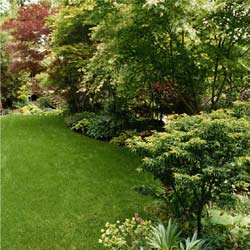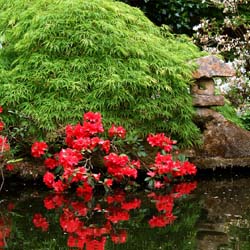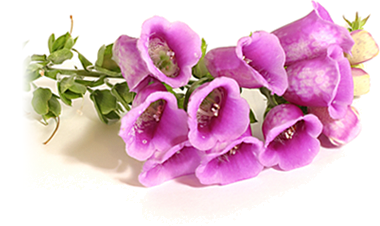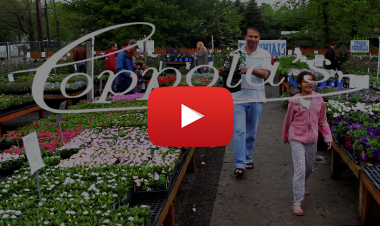There’s something about putting a tree in the ground that just feels right. In many cases, you start with just a bare trunk with a few branches and then, rather quickly, it begins sprouting new growth. You nurture your new acquisition and each year it increases in height and girth. Finally, one day, you look out the window and a magnificent mature tree is there to greet you!
Choosing Your Best Tree
Trees are a permanent addition to the landscape and therefore require a great deal of thought and planning in their selection so you are not regretting your choice as the tree matures. When choosing, not only do you need to keep climate and soil type in mind, but you will also need to consider how much space you have, both above and below the ground, and how large your tree will be at maturity. Large trees should be given the room that they need to grow and thrive. Planted in the wrong location, some large trees have far reaching roots that can damage plumbing, break underground utilities and buckle pavement, not to mention branches that can tower dangerously over your roof. Fortunately, there are many small to medium trees available that look great and cause no damage when planted close to your house, sidewalk or driveway.
Top Trees for Small Spaces
- Acer ginnala (Amur Maple) – Multi-stemmed, rounded habit, bright red fall color, 15-20’ h x 15-20’ w
- Acer griseum (Paperbark Maple) – Upright, irregular habit, exfoliating bark, excellent red fall color, 20-30’ h x 15-25’ w
- Acer palmatum (Japanese Maple) – Numerous varieties, textures, colors and forms and sizes for every taste and situation
- Aesculus pavia (Red Buckeye) – Native to the southeastern United States, red upright flowers in May to early June, flowers attract hummingbirds, 10-20’ h x 10-20’ w
- Amelanchier canadensis (Shadblow Serviceberry) – North American native, shrubby, multi-stemmed trunk tree, white flowers in early spring, edible purplish-black fruit, reddish-orange fall color, 6-15’ h x 15-20’ w
- Betula pendula ‘Youngii’ (Young’s Weeping Birch) – Strong weeping tendency, attractive white bark, yellow fall color, 8-12’ h x 10’ w
- Carpinus caroliniana (American Hornbeam) – Eastern North American native, multi-stemmed, smooth muscular gray bark, yellow/red/orange fall color, 20-30’ h x 20-30’ w
- Cercis Canadensis (Eastern Redbud) – Eastern North American native, often multi-stemmed, purple-pink flowers in early spring, 20-30’ h x 20-30’ w
- Chionanthus viriginicus (Fringe Tree) – North American native, multi-stemmed, rounded habit, fringe-like white flowers in May to early June, golden-yellow fall color, 12-20’ h x 12-20’ w
- Cornus alternifolia (Pagoda Dogwood) – Eastern North American native, tiered horizontal branching, white flowers late May to early June, blue-black fruit, persistent coral colored fruit stalks, yellow/reddish/purple fall color, 25’ h x 25’ w
- Cornus florida (Flowering Dogwood) – Eastern North American and northern Mexican native, rounded habit, white or pink flowers in mid-May, reddish-purple fall color, 30’ h x 30’ w
- Cornus kousa (Korean Dogwood) – Rounded habit, vase-shaped branching habit, flowers white aging to pink in early summer, red to purple fall color, 30’ h x 30’ w
- Cornus mas (Cornelian Cherry Dogwood) – Multi-stemmed, rounded habit, small yellow flowers in early spring, bright red berries in the summer eaten quickly by birds, 20’ h x 20’ w
- Crataegus viridis ‘Winter King’ (Winter King Hawthorn) – United States native, broad horizontal crown, white flowers in spring, yellow fall color, abundance of small red berries in winter, 15’ h x 20’ w
- Halesia tetraptera (Carolina Silverbell) – native, irregular to rounded and broad shaped, pendulous white bell-shaped flowers in May, Smooth muscle-like bark, 30 – 40’h x 25 – 35’w
- Magnolia stellata (Star Magnolia) – Multi-stemmed tree with oval habit, lightly fragrant showy white blooms in early spring, ornamental smooth silver-gray bark, 15-20’ h x 10-15’ w
- Malus sargentii (Sargent crabapple) – Mounded habit, blooms April through early May, fragrant flowers, pink-red in bud opening to white, very showy deep red fruit held in clusters, 6-8’ h x 9-12’ w
- Prunus cerasifera ‘Thundercloud’ (Thundercloud Plum) – Rounded habit, deep purple foliage all year around, slightly fragrant pink flowers in the spring, 20’ h x 20’ w
- Stewartia koreana (Korean Stewartia) – Pyramidal or oval in shape, white flowers in June and July, long bloom time, excellent fall color orange/yellow/red/purple, 25’ h x 12’ w
- Stewartia ovate (Mountain Stewartia) – Slow grower, dense with spreading branches, white flowers in July, orange to red fall color, 10-15’ h x 10-15’ w
- Stewartia pseudocamellia (Japanese Stewartia) – Slow grower, pyramidal, solitary white camellia-like flowers June to August, excellent fall color yellow/red/purple, beautiful exfoliating camouflage bark exposed in the winter, 40’ h x 20’ w
- Styrax japonica (Japanese Snowbell) – Horizontal branching, broad flat top at maturity, hanging white flowers from late May into June, good fall color of yellow with a reddish cast, 20-30’ h x 20-30’ w
- Syringa reticulate (Japanese Tree Lilac) – Stiff spreading branches, fragrant showy white flowers borne in early summer on panicles up to 12″ long and up to 10” wide, 20’ h x 15’ w
Overwhelmed with small tree varieties and not sure which one is best for your yard? Let our experts help you choose the perfect tree to fit your space!







